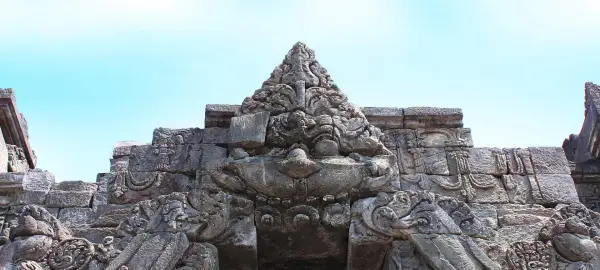Small Group Experiential Travel
Tour Code
ID6 When To Go
Mar Start
Medan (KNO) End
Denpasar (DPS) Countries Visited (1)
Indonesia Overnight In (6)
Medan, Yogyaka...More > Activity Level
2 - Moderate? Tour Type
Cultural? - Overview
- Info & Inclusions
- Itinerary
- Map & Hotels
- Photos
- Dates & Prices
Highlights
- Max Group Size 18
- Borobudur: largest stupa-style Buddhist monument in the world
- Prambanan: most extensive Hindu temple site in Indonesia
- Bali - island paradise
- Lake Toba & Samosir island
- Singles friendly (view options for single travellers)
Price Includes
- Breakfast and dinner (at local restaurants and some hotels) are included daily.
- All transport, accommodation, sightseeing and entrance fees for sites noted as 'visited' in the detailed itinerary.
- Gratuities for drivers, restaurant staff, porters, local guides.
- Airport transfers for travellers who are arriving/departing on tour dates and book their air through us
- Any early arriving/late departing travellers who book both their air and extra nights through us.
Exclusions
- International airfare to/from the tour.
- Tour Leader gratuities, most lunches, drinks, personal items (phone, laundry, etc), domestic and international (if applicable) air taxes, and any excursions referenced as 'optional'.
- Airport transfers for Land Only customers.
- Optional trip cancellation insurance (please refer to the "Resources" tab for more information).
Trip Info
- Seasonality and Weather:
Tropical climate varying from area to area. The eastern monsoon brings the driest weather (June to September), while the western monsoon brings the main rains (December to February). Rainstorms occur all year; higher regions are cooler. - Transport and Travel Conditions:
Land transport throughout will be by private air-conditioned bus. Most of the driving days are not long, usually no more than four hours. Internal flights via scheduled regional carriers.
The tour is not strenuous though it is busy; you must be steady on your feet and be able to endure some heat and long days. We have numerous walking tours and visit several sites that are LARGE with steps and uneven surfaces.
Porters are available at hotels but you must be able to manage with your baggage at airports.
To add an extension to Timor Leste (East Timor), refer to tour ID10
Am I suitable for this tour? Please refer to our self-assessment form - Activity Level: 2
These are particularly busy tours that feature a lot of moving around, sometimes by train and short journeys on local transport. Walking tours of towns and cities are leisurely but you should be prepared to be on your feet for several hours. Some of our cultural trips that occur at high altitude and/or require greater independence with baggage handling (at hotels, airports, train stations) also fall into this category.
To learn more about the Activity levels, please visit our tour styles page. - Accommodation:
Hotels used on tour are modern, comfortable, well-located, air-conditioned, 3-4 star properties with en suite bath / toilet. Single rooms are limited and possibly smaller than twins. Laundry facilities are available at most hotels for a reasonable price. Safe deposit boxes are available in most hotels either free or for a nominal fee. All are air-conditioned. - Staff and Support:
Tour Leader throughout, local guides, local driver/s. - Group Size:
Maximum 18 (plus Tour Leader)
View / Print Itinerary
- Day 1:Arrive in MedanToday we arrive in Medan, the main city in northern Sumatra.
North Sumatra is a land of great mountains, waterfalls, lakes, a mixture of cultural groups, plantations of rubber, tobacco, palm oil, and coffee.
Overnight in Medan.
Included Meal(s): Dinner, if required - Day 2:Medan - Samosir Island, Lake TobaAfter breakfast we embark on a brief city tour of Medan. We stop at the Maimoon Palace, built in 1888 by the Sultan of Deli and recently renovated. The palace blends Malay, Islamic, Spanish, Indian, and Italian architectural styles, reflecting Medan's multicultural heritage. We visit the Grand Mosque, built in the Moroccan style with black domes and octagonal minarets. Before leaving Medan, we explore Tjong A Fie Mansion, often called a "historical jewel." The 35-room, two-storey mansion was built in 1895 by a Hakka merchant who became one of Medan's wealthiest residents through plantations and contributed to building the island's railway system.
Afterwards we travel south by road from Medan to Lake Toba, where we take a ferry across the lake to Samosir Island. Lake Toba, the world's largest volcanic lake, formed approximately 74,000 years ago in a supervolcanic eruption so massive it may have caused a volcanic winter lasting several years. At 1,145 square kilometres, the lake is larger than Singapore. Samosir Island, at 630 square kilometres, is the world's largest island within an island and the fifth-largest lake island globally. This is a full day of travel with stops for rest and points of interest.
Overnight on Samosir Island or Parapat.
Included Meal(s): Breakfast and Dinner - Day 3:Samosir Island, Lake TobaSamosir Island is the centre of Batak culture, with several villages of historical interest. Traditional houses are constructed of wood with high boat-shaped roofs; the main posts, walls, and gable ends carry carved decorations of buffalo horns and other motifs.
We learn about the animist culture of the Batak people through visits to cultural sites and traditional houses. The Batak were formerly headhunters and cannibals, and due to their isolation in the high mountains, they retained many ancient proto-Malay cultural traditions longer than most Indonesian groups. According to tradition, all Bataks descend from Si Raja Batak, a hero-ancestor of supernatural parentage born on a holy mountain adjacent to Lake Toba. Christian missionaries arrived in the mid-19th century, and today most Bataks are Christian, though they maintain strong cultural identity and customs.
Our stops include the King Sidabutar Tomb in Tomok, dating from the early 19th century, and the 300-year-old stone chairs where village elders once gathered for discussions and decisions. We explore the museum at Simanindo, converted from a traditional house that belonged to Rajah Simalungun, a Batak king. We visit one of the island's highest points for panoramic views that reveal the massive volcanic explosion that formed both Samosir Island and Lake Toba.
We return to our hotel on Samosir Island. We usually have free time in the afternoon to enjoy the resort or swim in the lake.
Overnight on Samosir Island or Parapat.
Included Meal(s): Breakfast and Dinner - Day 4:Samosir Island - BerastagiThis morning we take a long, leisurely drive toward Berastagi, starting across the narrow land bridge that connects the "island" to the mainland. This region of North Sumatra is volcanic in nature, and many sulphurous hot springs dot the landscape. At the northern end of Lake Toba we stop at the impressive Sipiso-Piso Waterfalls, plunging 120 metres (394 feet). From the viewpoint at the top, a 360-degree panorama reveals Lake Toba and the surrounding countryside.
The area north of Lake Toba is known as Karoland or the Karo Highlands, home to the Karo Batak people. The five Karo Batak clans and 83 subclans inhabit a high, lush plateau of mountain slopes and rich volcanic valleys. Several volcanoes dominate the area, some still steaming. Gunung Sibayak at 2,070 metres (6,790 feet) and Gunung Sinabung at 2,417 metres (7,930 feet) are the highest and can be seen from many locations. We stop in Dokan, a Karo Batak village where traditional houses with distinctive curved roofs still stand.
Overnight in Berastagi.
Included Meal(s): Breakfast and Dinner - Day 5:Berastagi - Medan (Sumatra) - Yogyakarta (Java)This morning we drive from Berastagi to Medan (2-3 hours with stops) and fly to Yogyakarta, Java's cultural heart. Located at the foot of the volcano Merapi, the fertile plain of Yogyakarta was, in the 16th and 17th centuries, the seat of the mighty Javanese empire of Mataram. The Sultanate of Yogyakarta, established in 1755, retains special autonomous status within Indonesia today, with the Sultan serving as hereditary governor.
NOTE: Our flight from Medan to Yogyakarta will likely transit through Jakarta.
Overnight in Yogyakarta.
Included Meal(s): Breakfast and Dinner - Day 6:Yogyakarta - Prambanan - Yogyakarta: City TourToday we visit Prambanan, the most extensive Hindu temple site in Indonesia.
Prambanan, located approximately 18 kilometres east of Yogyakarta, is the largest Hindu temple compound in Indonesia and a UNESCO World Heritage Site. The temple is characterised by its tall and pointed architecture, typical of Hindu temple design, and by the 47-metre (154-foot) high central building inside a large complex of individual temples. Built around AD 850, likely by King Rakai Pikatan of the second Mataram dynasty, the temple was dedicated to the Trimurti - Brahma the creator, Vishnu the preserver, and Shiva the destroyer. Each deity has a main temple in the central courtyard. Not long after construction, the temple was abandoned, possibly due to volcanic eruptions or political shifts, and began to deteriorate. Major restoration began in 1918 and continues today.
After our guided tour, we return to Yogyakarta. This afternoon's sightseeing includes the Sultan's palace, the Kraton, a vast complex of courtyards, halls, and pavilions in Javanese traditional style. The most important structure is the Golden Pavilion - ornately carved and heavily gilded, its graceful roof supported by finely carved wooden beams. Here the Sultan received royal guests and held balls and banquets.
We also visit the nearby Taman Sari (Water Castle), the ruins, pools, arches, and underground passages of former pleasure gardens built in 1758 by Sultan Hamengkubuwono I as a rest house and pleasure park for the royal family.
At some point during our stay in Yogyakarta we hope to attend a performance of the Ramayana ballet, a dance based on ancient Hindu folklore.
Overnight in Yogyakarta.
Included Meal(s): Breakfast, Lunch and Dinner - Day 7:Yogyakarta - Borobudur - YogyakartaFrom Yogyakarta we drive north to Borobudur, the largest stupa-style Buddhist monument in the world. This incredible monument, built and decorated before AD 800, ranks among the world's greatest art complexes for its size, quality, sophistication, and excellent state of preservation.
Borobudur was built in three tiers: a pyramidal base with five concentric square terraces, the trunk of a cone with three circular platforms, and at the top, a monumental stupa. The walls and balustrades are decorated with fine low reliefs covering a total surface area of 2,500 square metres. Around the circular platforms are 72 openwork stupas, each containing a statue of the Buddha. The monument was constructed using approximately two million blocks of volcanic stone, cut, transported, and fitted without mortar. The reliefs depict Buddhist teachings and the life of Buddha, meant to be viewed by pilgrims walking clockwise around each level - a spiritual journey from the realm of desire through the realm of forms to the realm of formlessness.
The monument was abandoned in the 14th century when Java's population converted to Islam, and volcanic ash and jungle growth buried it for centuries. British administrator Thomas Stamford Raffles rediscovered it in 1814. The monument was restored with UNESCO's help in the 1970s.
After our guided site tour, we return to Yogyakarta. Your afternoon is free. Wandering the narrow streets of the markets, you'll see beautiful crafts for sale, including the famous wayang wooden and leather puppets, but especially batik. Yogyakarta is renowned for its batik textiles.
Overnight in Yogyakarta.
Included Meal(s): Breakfast and Dinner - Day 8:Yogyakarta (Java) - Denpasar (Bali) - CandidasaToday we fly from Yogyakarta to Denpasar (possibly via another connecting point) on the island of Bali and transfer to our hotel at Candidasa.
Bali is home to the vast majority of Indonesia's Hindu minority - 93.18% of Bali's population adheres to Balinese Hinduism, a unique blend of Hindu, Buddhist, and indigenous animist beliefs. While most of Indonesia converted to Islam between the 13th and 16th centuries, Bali remained Hindu, creating a cultural island within the world's largest Muslim-majority nation. The island is renowned for its highly developed arts, including dance, sculpture, painting, leather work, metalworking, and music.
On arrival at Denpasar airport, we travel by road through verdant Balinese countryside to the east coast town of Candidasa, a tranquil coastal area nestled between the Lombok Strait to the east and mountains to the west. En route we stop in Tenganan, a symmetrically laid-out Bali Aga village with walled homes and unique crafts. The Bali Aga were Bali's original inhabitants before the arrival of Hindu Javanese in the 15th century. Tenganan retains its ancient pre-Hindu customs through a strong code of traditional practices, further reinforced by its surrounding walls.
After our sightseeing we transfer to our hotel in Candidasa.
Overnight in Candidasa.
Included Meal(s): Breakfast and Dinner - Day 9:Candidasa: Eastern Bali TouringToday we embark on a leisurely exploration of eastern Bali, starting with a visit to Taman Ujung, a former royal retreat set within vibrant tropical gardens. This Water Palace, built in 1921 by the last King of Karangasem, blends Balinese and European architectural styles. The palace served as a place for the king to receive important guests and relax with family. Nearly destroyed by the eruption of Mount Agung in 1963 and an earthquake in 1979, it has been beautifully restored. As we wander through the extensive grounds, we see impressive traditional carvings, elegant pavilions, and views of the surrounding countryside.
Our journey continues to Taman Tirta Gangga, another water palace that once served as a holy bathing area for Balinese royalty. Built in 1946 by the same king who created Taman Ujung, this complex features tiered pools, decorative ponds, and striking statues, creating a calm and picturesque environment. The name means "water of the Ganges," reflecting the Hindu reverence for that sacred river. The spring-fed pools remain filled with clear water and koi, with stepping stones allowing visitors to walk across the main pool.
We break for lunch and then head to Virgin Beach (Bias Tugel). This relatively quiet beach offers clear waters, gentle waves, and a relaxed atmosphere, ideal for soaking up the sun, taking a dip, or simply unwinding.
Overnight in Candidasa.
Included Meal(s): Breakfast and Dinner - Day 10:Candidasa - Besakih Temple - Penglipuran - UbudToday we explore Besakih Temple and, weather permitting, catch a glimpse of Mount Agung. At Besakih, we don a sarong - provided at the entrance - before wandering through this important spiritual site. We take a shuttle to reach the temple, where there are stairs to navigate.
Besakih Temple, known as the "Mother Temple of Bali," sits on the slopes of Mount Agung at about 1,000 metres (3,280 feet) elevation. The complex comprises at least 86 temples, including the central Pura Penataran Agung with its towering multi-tiered shrines. The temple has existed in some form for over a thousand years. Besakih is Bali's most important Hindu temple, and each of the island's regencies maintains at least one shrine here. The temple miraculously survived the catastrophic 1963 eruption of Mount Agung, when lava flows stopped just metres from the temple grounds - an event Balinese Hindus interpreted as divine intervention.
After lunch, we drive to Penglipuran village, consistently ranked among Indonesia's cleanest villages and known for its traditional Balinese entrance gates and architecture. The village maintains strict traditional regulations - all houses follow the same style, and specific customary laws govern village life. We wander through the peaceful bamboo forest that provides material for traditional construction and crafts.
Weather permitting, we may stop at Kanto Lampo waterfall, known for its cascading rock formations.
Finally, we drive to our accommodation in Ubud, Bali's cultural heart.
Overnight in Ubud.
Included Meal(s): Breakfast and Dinner - Day 11:Cooking Class & Ubud Surrounding TourGet hands-on and discover the culinary secrets of authentic Balinese cooking! Starting at 7 am, we head to Ubud's Traditional Market to barter with locals for ingredients. We proceed to a fully-equipped community kitchen and use traditional ingredients and preparation methods to create authentic local dishes under instruction from a Balinese chef. Afterwards, sit down with your fellow chefs and enjoy your meal!
After our cooking adventure, it's a short drive to Gunung Kawi at Tampaksiring. This 11th-century temple complex is carved into the cliffside in a river valley. Be prepared for a descent - several hundred steps lead down. The temple itself is stunning and worth the effort, though the return climb is a bit of a workout. Take your time and enjoy the scenery.
Next, we visit the holy spring of Tirta Empul. Built around 960 AD, this temple features sacred spring water that Balinese Hindus use for purification rituals. The water flows through spouts where devotees bathe and pray. You can witness locals participating in these rituals and admire the serene atmosphere.
Our final stop is a local coffee plantation. Here, you'll see how coffee, including the rather unique Luwak coffee, is produced. Luwak coffee comes from beans processed through the digestive system of the Asian palm civet. We'll have a tasting session where you can sample a variety of local coffees and teas, with a set of twelve different drinks to try for every two people.
Finally, it's a short drive back to our hotel in Ubud.
Overnight in Ubud.
Included Meal(s): Breakfast, Lunch and Dinner - Day 12:Barong Dance & Ubud TouringOur day begins with an enchanting performance of the traditional Barong dance. This captivating spectacle pits good against evil, with the mythical Barong - a lion-like creature representing benevolent spirits - battling the demonic witch Rangda. The performance, accompanied by gamelan music, depicts a story from Balinese mythology with elaborate costumes and dramatic choreography.
We then venture into the Ubud Monkey Forest, officially the Sacred Monkey Forest Sanctuary. Home to over 700 long-tailed macaques, this sacred site protects three temples dating from the 14th century. As we wander through the lush forest, we encounter ancient temples and serene ponds. The monkeys, accustomed to visitors, move freely throughout the sanctuary. Keep a close eye on your belongings - these clever creatures are known for snatching glasses, phones, and anything shiny!
Afterward, we immerse ourselves in the vibrant atmosphere of Ubud Market. Here, you can browse colourful textiles, intricate wood carvings, and local handicrafts. Remember that bargaining is expected and part of the shopping experience.
The remainder of the day is free to explore Ubud at your own pace. You might wander through charming art galleries, indulge in a spa treatment, or simply relax by the pool. Ubud offers excellent restaurants serving both traditional Balinese cuisine and international fare.
Overnight in Ubud.
Included Meal(s): Breakfast and Dinner - Day 13:Ubud - Turtle Center - Padang Padang Beach - Uluwatu Temple - South BaliToday we set off to Serangan Island for a visit to the Turtle Conservation and Education Centre (TCEC). This is a chance to see the important work being done to protect sea turtles. We'll learn about their life cycles, the threats they face from pollution and habitat loss, and the efforts to ensure their survival. You'll have the opportunity to see these fascinating creatures up close and perhaps contribute to their well-being with a donation if you feel inclined.
Our next stop is Padang-Padang Beach, tucked between impressive cliffs. This beach feels like a bit of a hidden gem, with its clear waters and inviting waves. It's an ideal spot for a paddle, sunbathing, or simply soaking in the atmosphere. You might recognize it from the film "Eat Pray Love" - it's quite the picturesque location.
Later in the day, we journey to Uluwatu Temple, situated dramatically on the edge of a cliff about 70 metres (230 feet) above the crashing waves. This ancient Hindu temple, dating from the 11th century, provides sweeping panoramic views of the Indian Ocean, especially stunning as the afternoon light begins to soften. Now, a friendly caution: the temple grounds are also home to some rather cheeky monkeys. They're quite adept at relieving visitors of their belongings, so heed your Tour Leader's advice about keeping a close eye on phones, glasses, earrings, and anything else that might catch their eye!
Finally, we transfer to our hotel in South Bali, where you'll have free time to relax before gathering for dinner.
Overnight in South Bali.
Included Meal(s): Breakfast and Dinner - Day 14:Departure from DenpasarDeparture from Denpasar.
BON VOYAGE!
Included Meal(s): Breakfast
Regions Visited: Southeast Asia
Countries Visited: Indonesia
Countries Visited: Indonesia
*The red tour trail on the map does not represent the actual travel path.
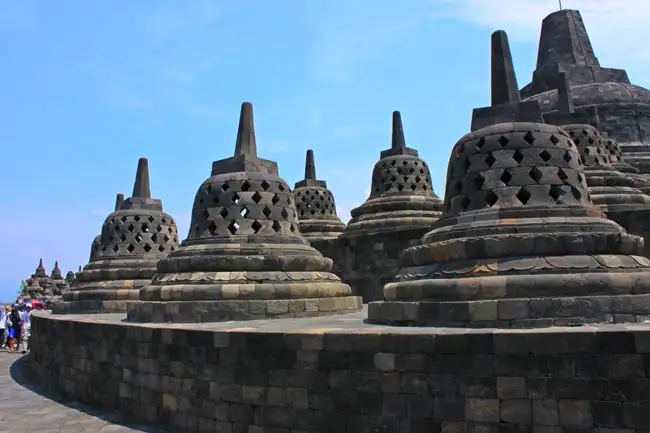
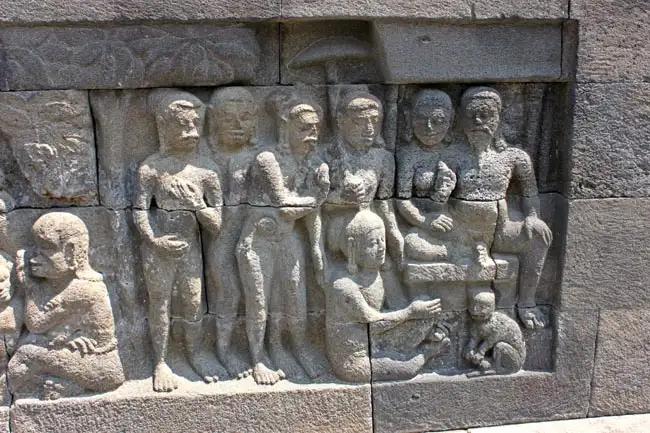
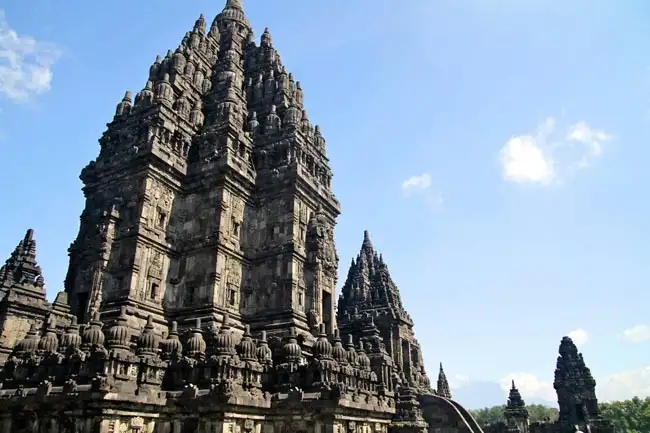
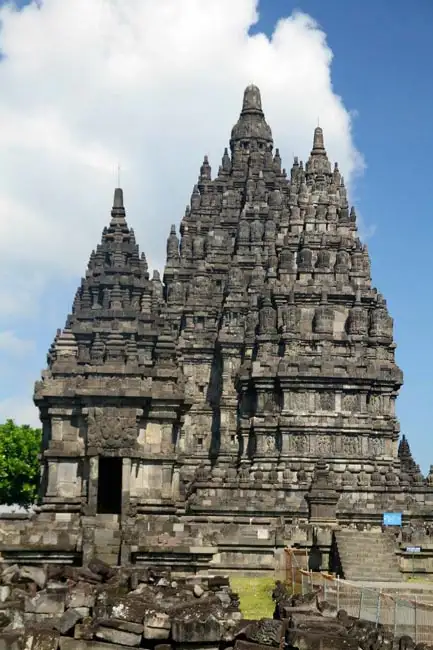
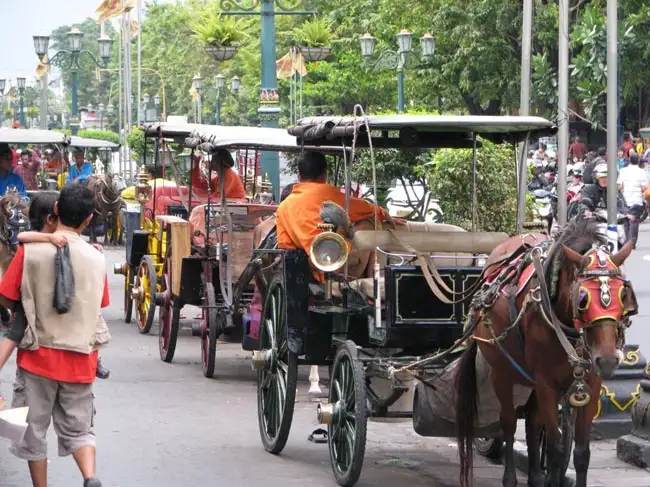
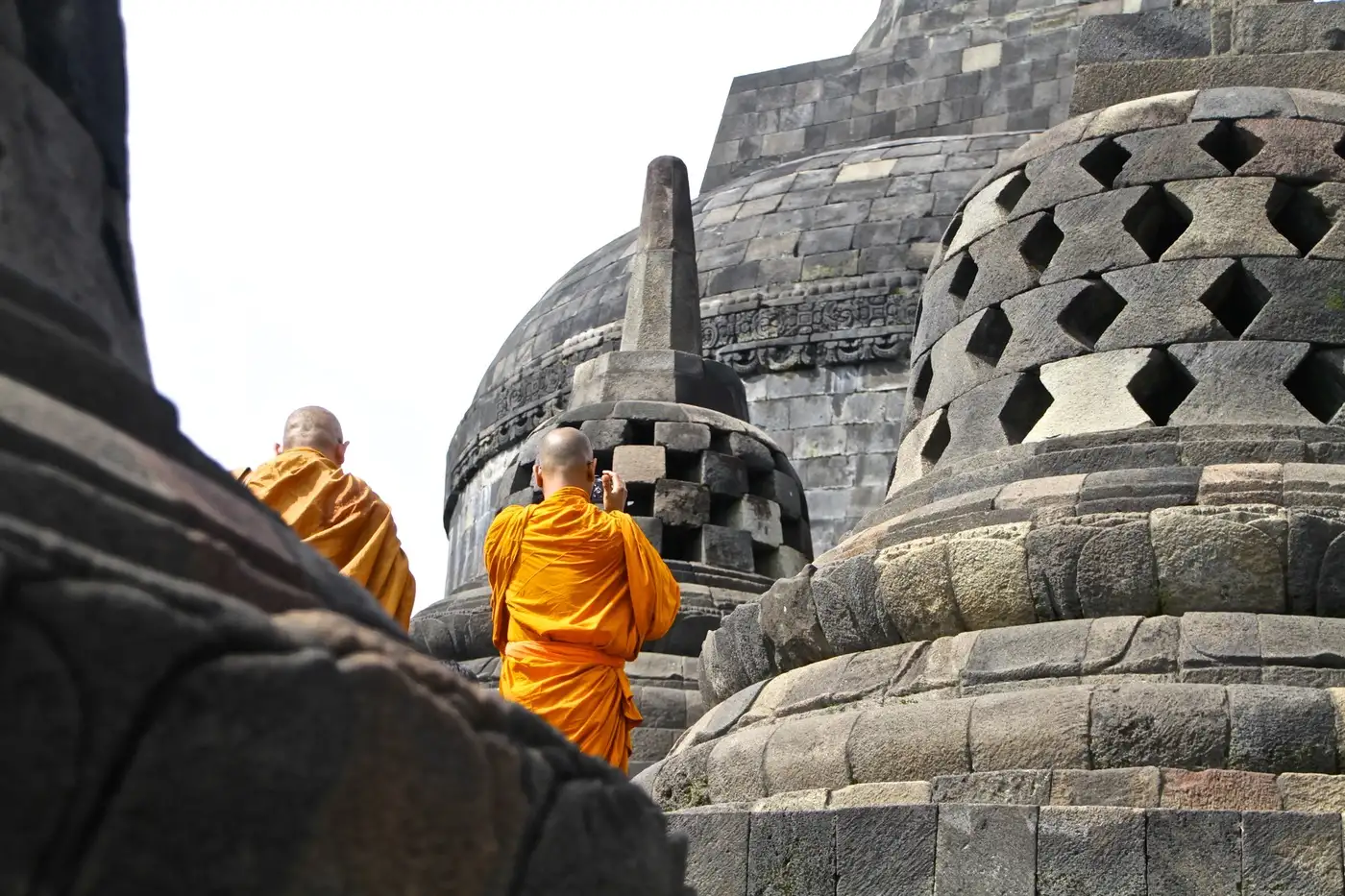
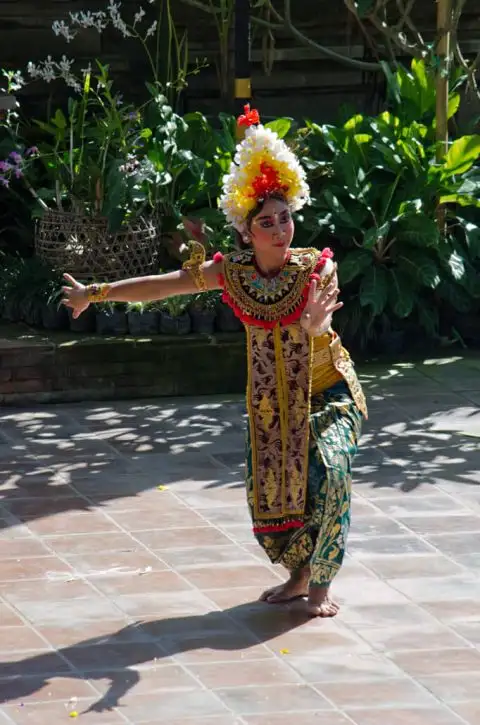
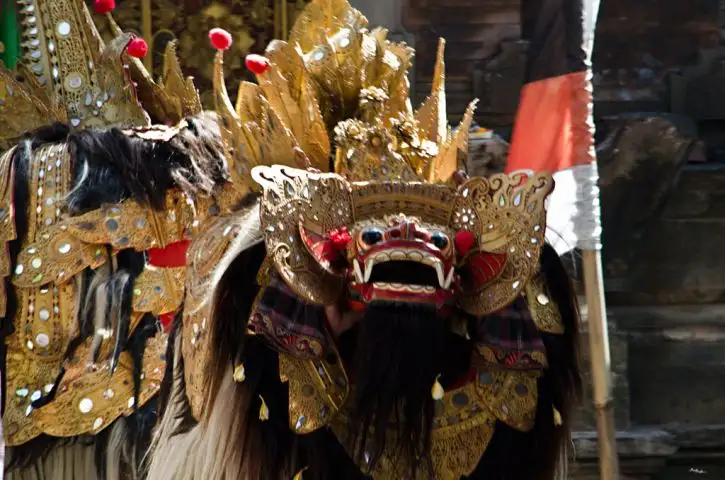
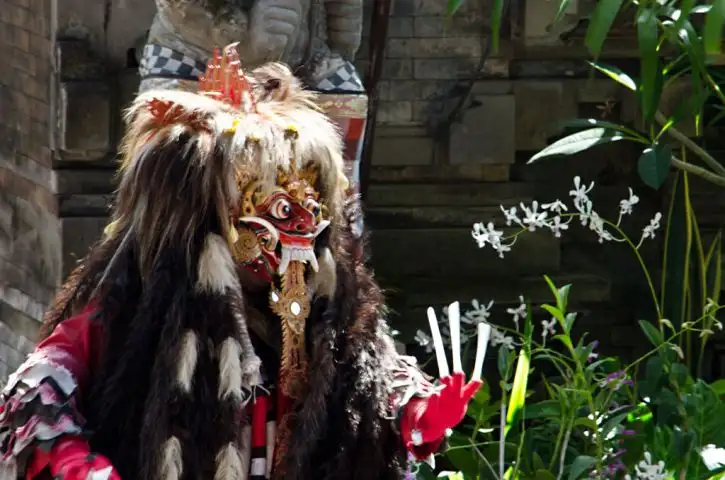
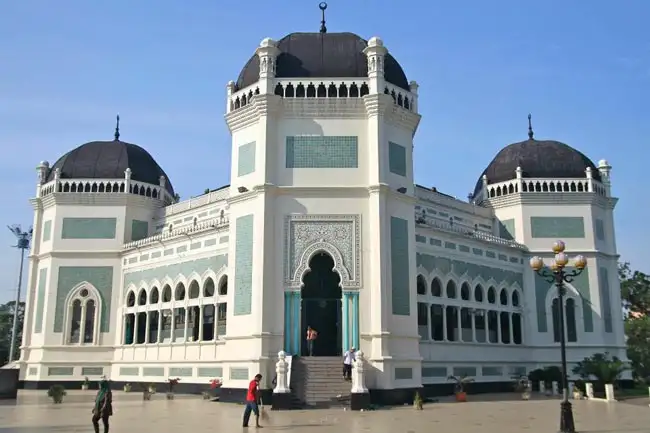
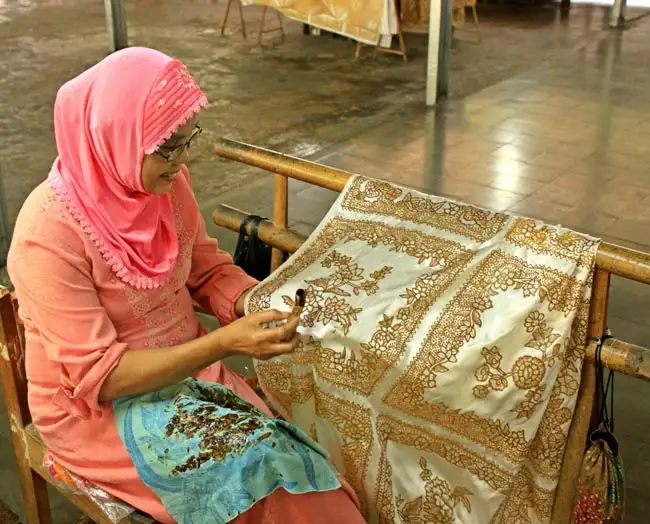
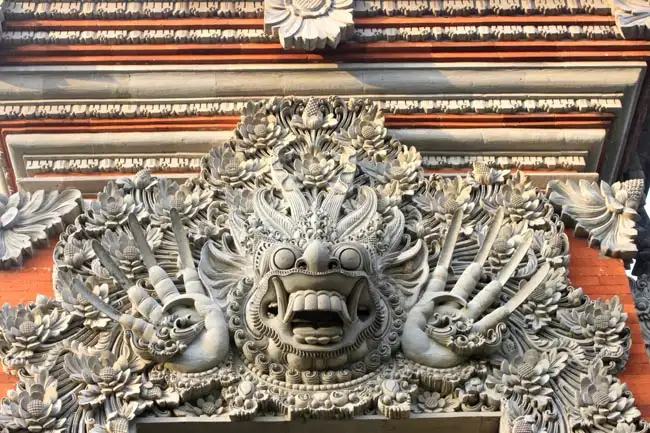
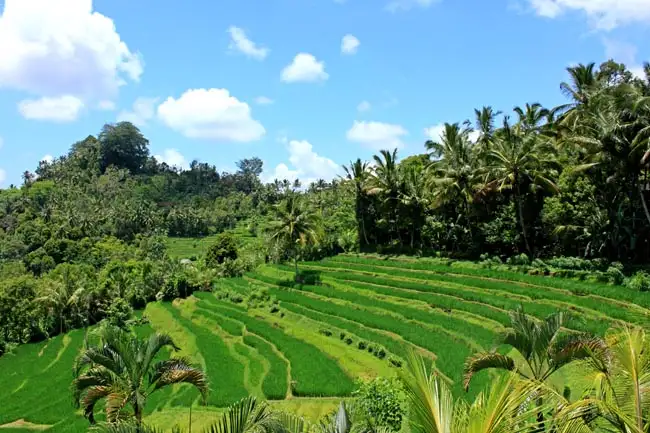
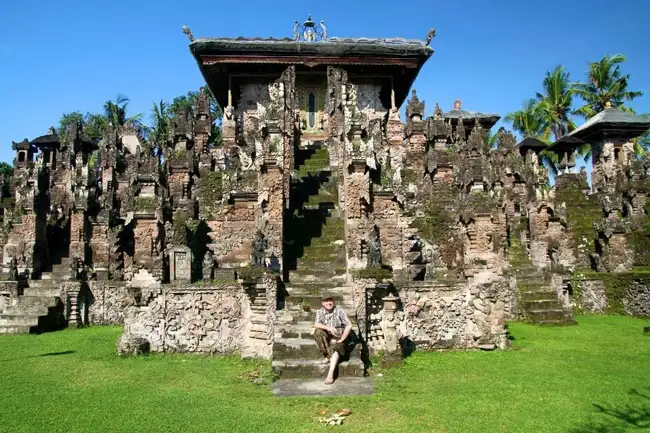
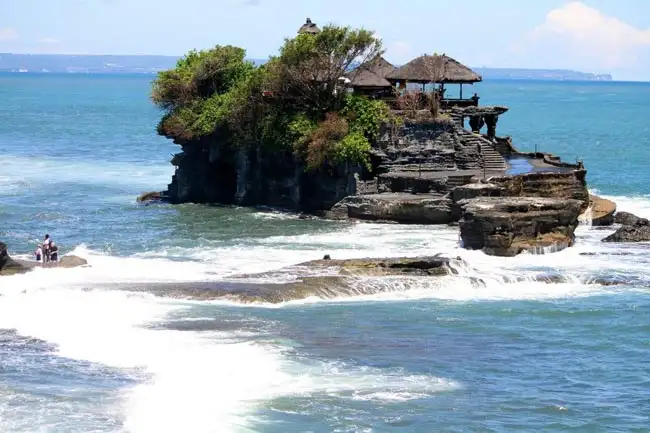
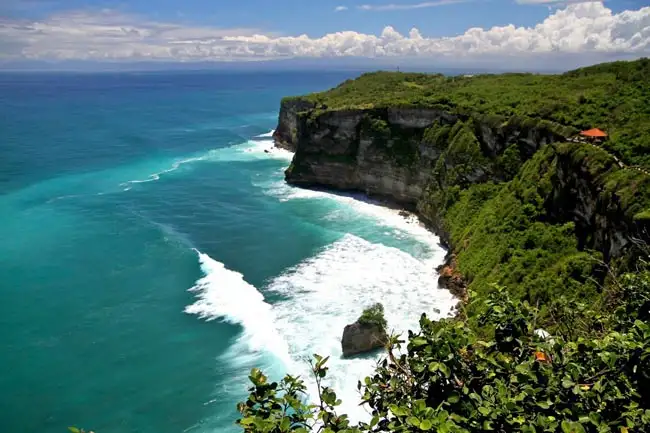
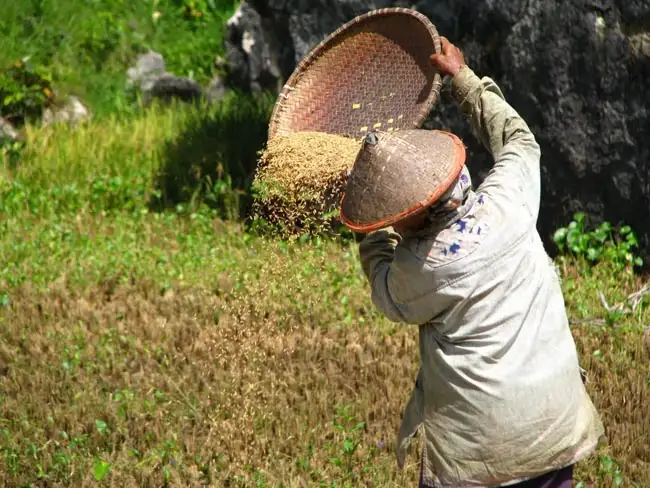
Excellent
Overall Rating
4.7
Extend Your Trip
This tour is part of a series that can be upgraded to make for a longer trip.
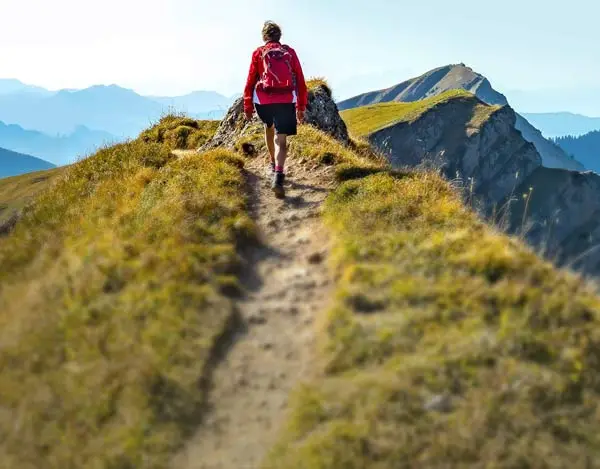
Fast and easy
Book This Tour
Book your unforgettable adventure today! For any questions or advice, don't hesitate to contact us.
Have questions?
1-800-665-3998
- Final payment: Due 90 days prior to departure.
- Deposit: A non-refundable $500 USD Deposit is required at booking.
- Internal Flight Taxes: An extra $63 USD applies for taxes and fees on tour flights. The internal airfares are included, but taxes are listed separately as they may change. Exceptions are noted in Red.
- Optional Single Supplement: $900 USD (number of singles limited).
(View options forsingle travellers) - Transfering Tour or Date: Transferring to another tour or tour date is only permissible outside of 120 days prior to departure and is subject to a $100 USD change fee.
(Read our cancellation policy)
Choose your departure date:
Prices below are per person, twin-sharing costs in US Dollars (USD). Pricing does not include airfare to/from the tour and any applicable taxes.
Prices below are per person, twin-sharing costs in US Dollars (USD). Pricing does not include airfare to/from the tour and any applicable taxes.
Frequently Asked Questions
- What is the maximum number of participants on a trip?Most of our tours carry a maximum of 18 participants; some tours (ie hiking tours) top out at 16. In the event that we do not achieve our minimum complement by our 90-day deadline, we may offer group members the option of paying a "small-group surcharge" as an alternative to cancellation. If all group members agree, we will confirm the trip at existing numbers; this surcharge is refundable in the event that we ultimately achieve our regular minimum. If the small group surcharge is not accepted, we will offer a refund of your deposit or a different trip of your choice.
- Can I extend my tour either at the beginning or end? What about stopovers?Yes, you can extend your tour either at the beginning or the end and we can book accommodation in our tour hotel. Stopovers are often permitted, depending on air routing. Stopovers usually carry a "stopover" fee levied by the airline.
- How do I make a reservation? How and when do I pay?The easiest way to make a reservation is via our website; during office hours, you are also more than welcome to contact us by telephone.
A non-refundable deposit is payable at the time of booking; if a reservation is made within 90 days, full payment is required. Some trips require a larger deposit. If international airline bookings require a non-refundable payment in order to secure space or the lowest available fare, we will require an increase in deposit equal to the cost of the ticket(s).
Early enrolment is always encouraged as group size is limited and some trips require greater preparation time.
Once we have received your deposit, we will confirm your space and send you a confirmation package containing your trip itinerary, any visa/travel permit related documents, invoice, clothing and equipment recommendations, general information on your destination(s), and forms for you to complete, sign and return to us. Your air e-tickets (if applicable), final hotel list, final trip itinerary, and instructions on how to join your tour, will be sent approximately 2-3 weeks prior to departure. - What about cancellations, refunds, and transfers?Please review our cancellation policy page for details.
- I am a single who prefers my own room. What is a single supplement?All of our tours have a single supplement for those who want to be guaranteed their own room at each location.
This supplement is a reflection of the fact that most hotels around the world do not discount the regular twin-share rate for a room by 50% for only one person occupying a room. Most hotels will give a break on the price, but usually in the range of 25-30% of the twin-share rate. This difference, multiplied by each night, amounts to the single supplement.
The conventional amount can also vary from country to country and some destinations are more expensive than others for single occupancy. In order to be "single friendly," the supplements we apply are not a profit centre for us and we do our best to keep them as reasonable as possible.
On most tours we limit the number of singles available, not to be punitive, but rather because many hotels allow for only a limited number of singles; some smaller hotels at remote locations also have a limited number of single rooms available.
Please note that most single rooms around the world are smaller than twin-share rooms and will likely have only one bed. - Do you have a shared accommodation program?Yes! If you are single traveller and are willing to share, we will do our best to pair you with a same-gender roommate. Please note that should we fail to pair you, we will absorb the single supplement fee and you will default to a single room at no extra charge.
